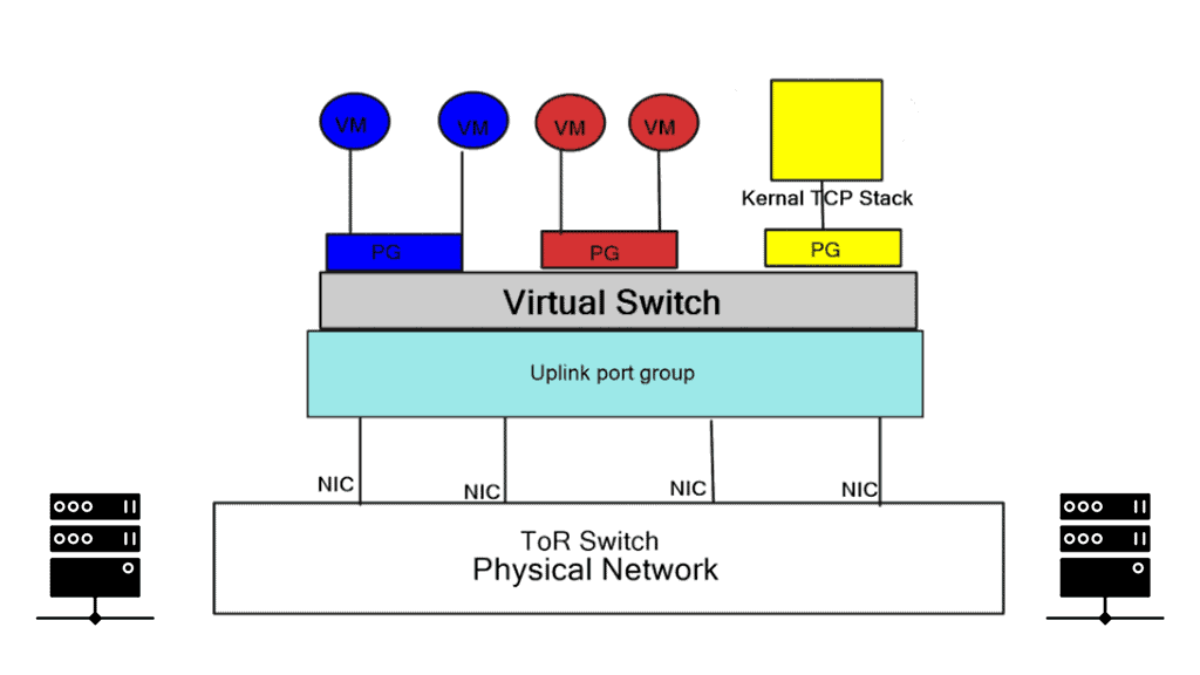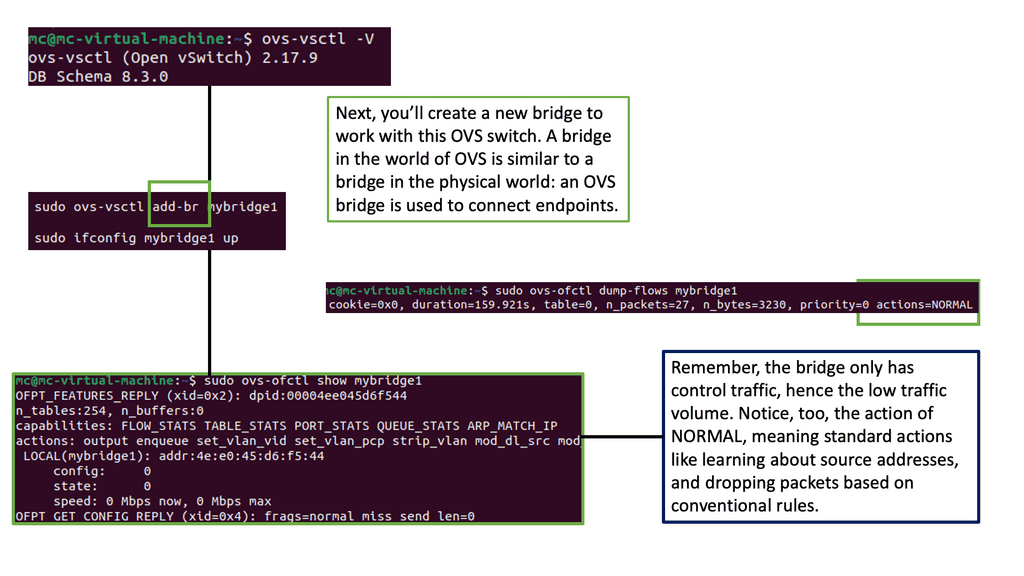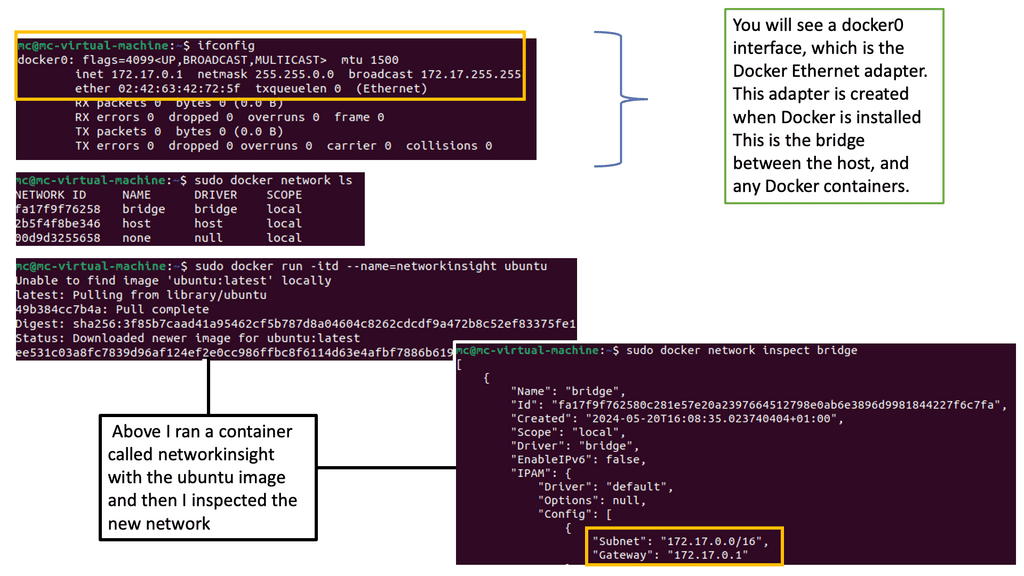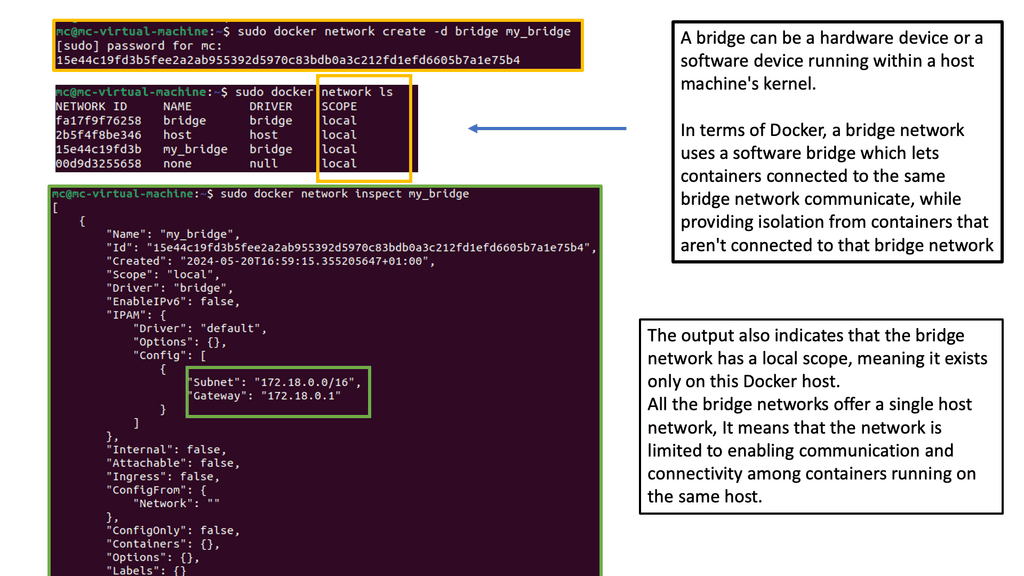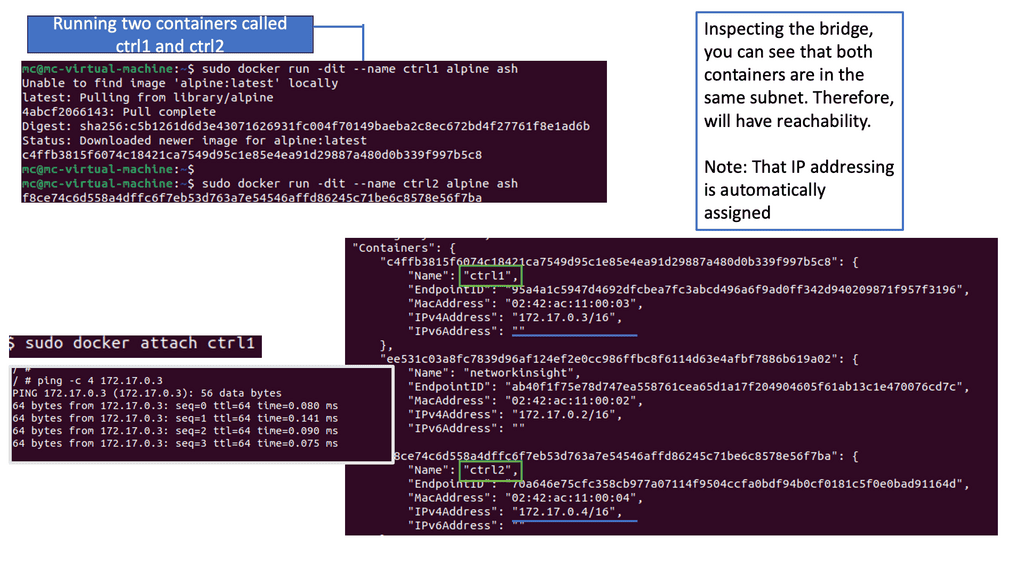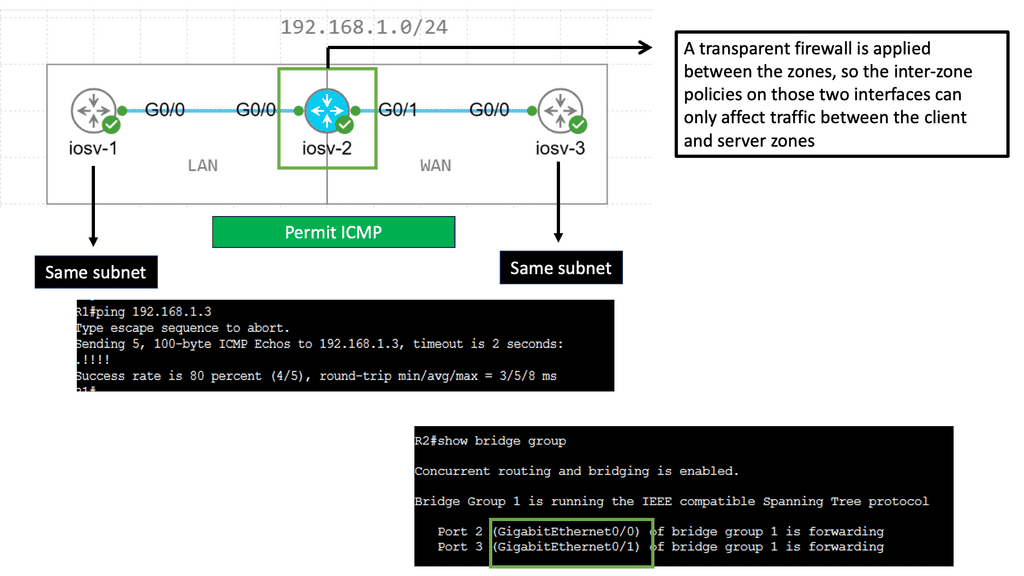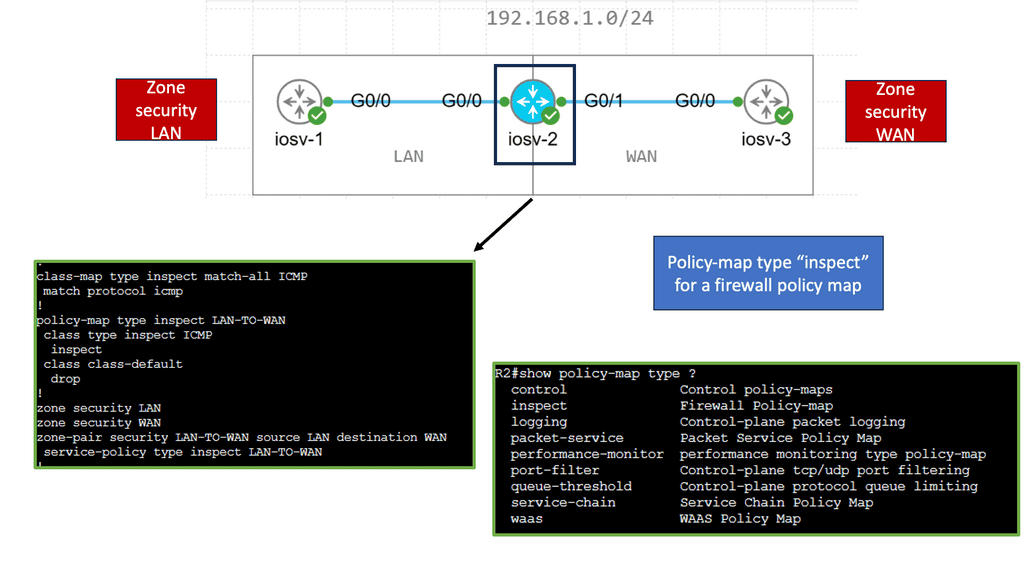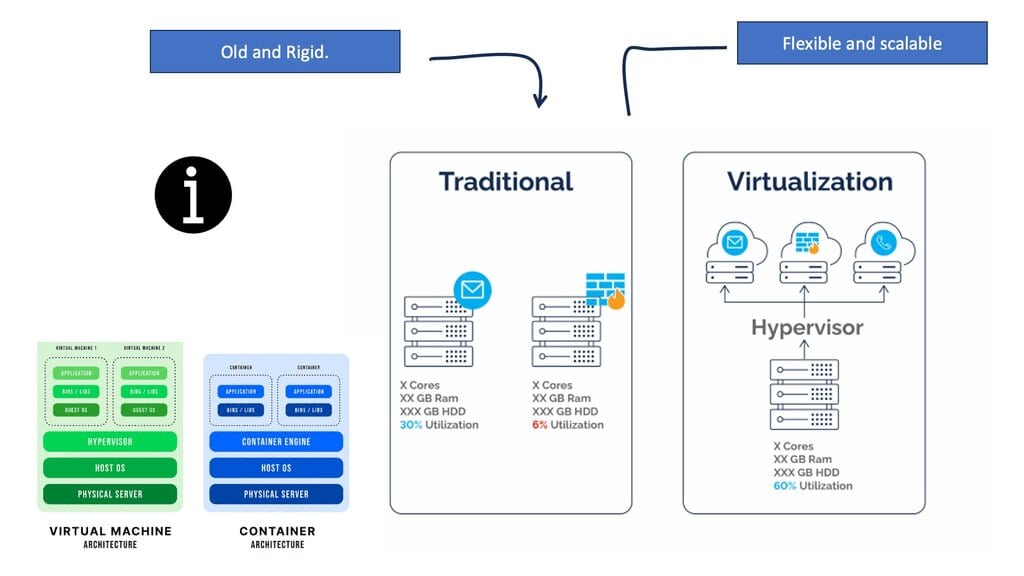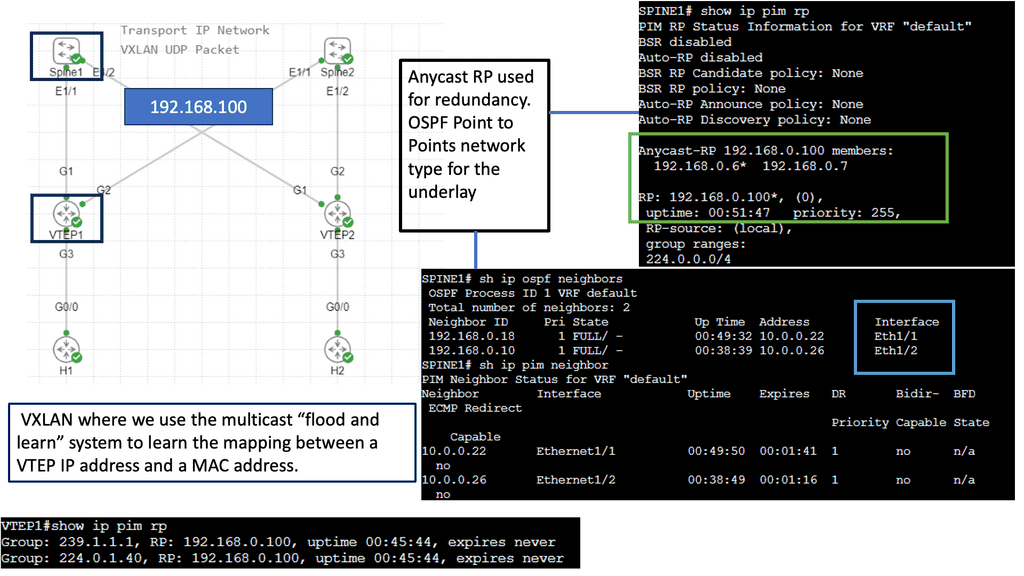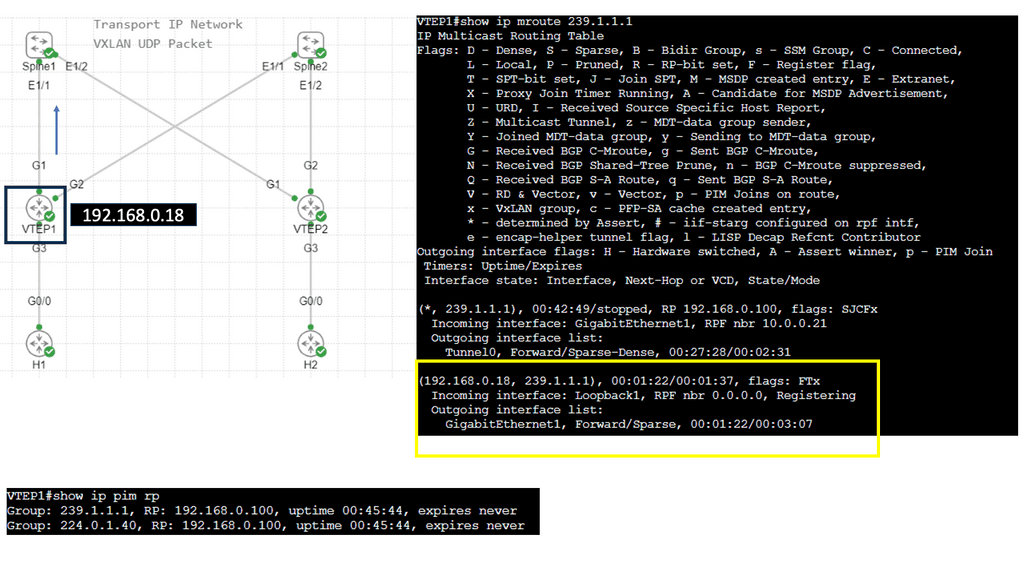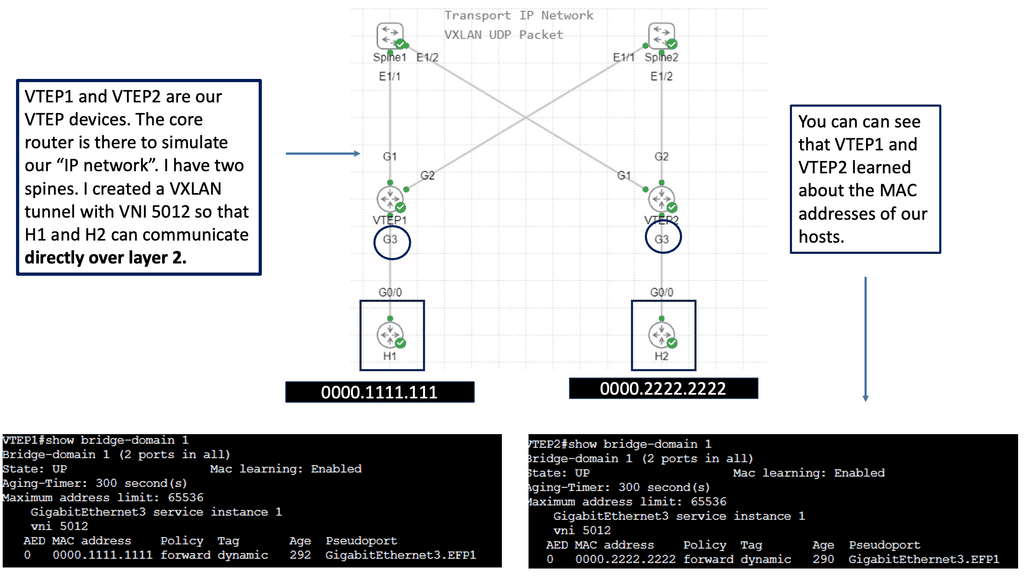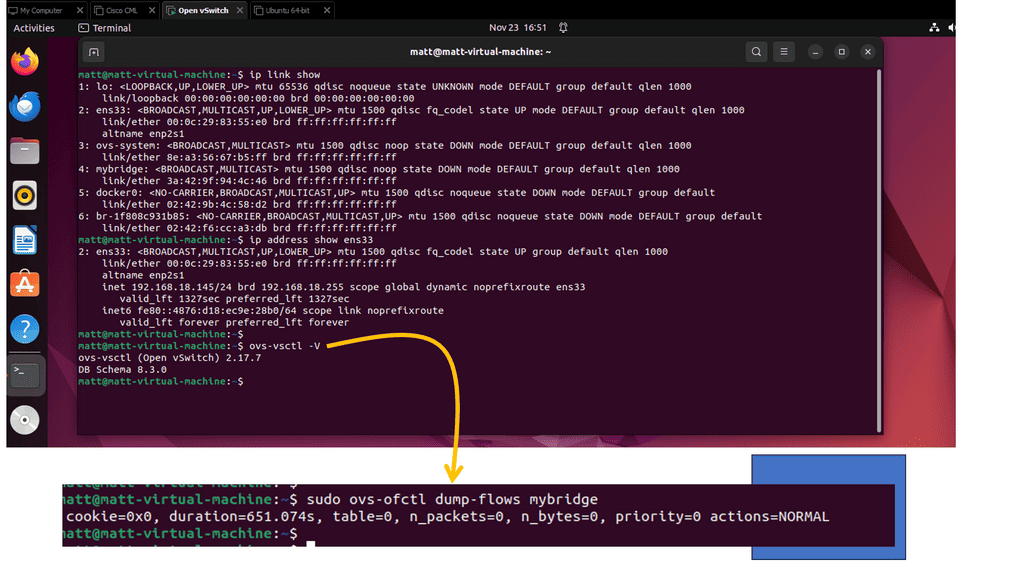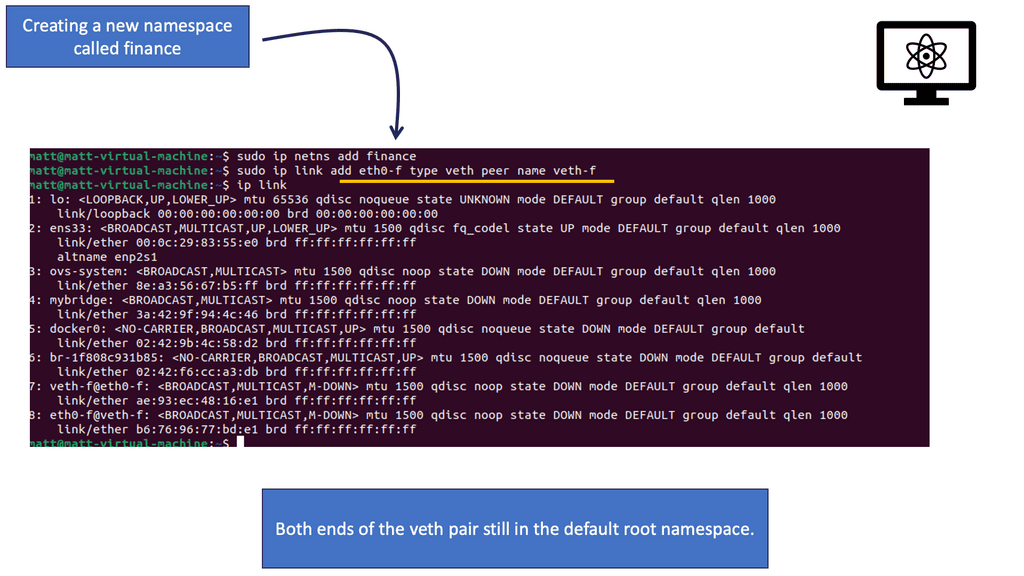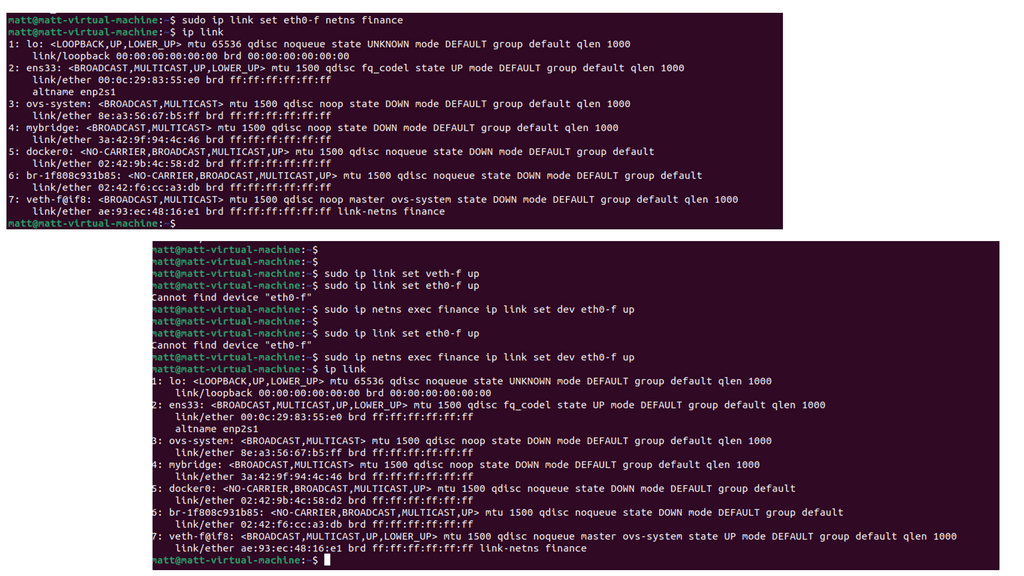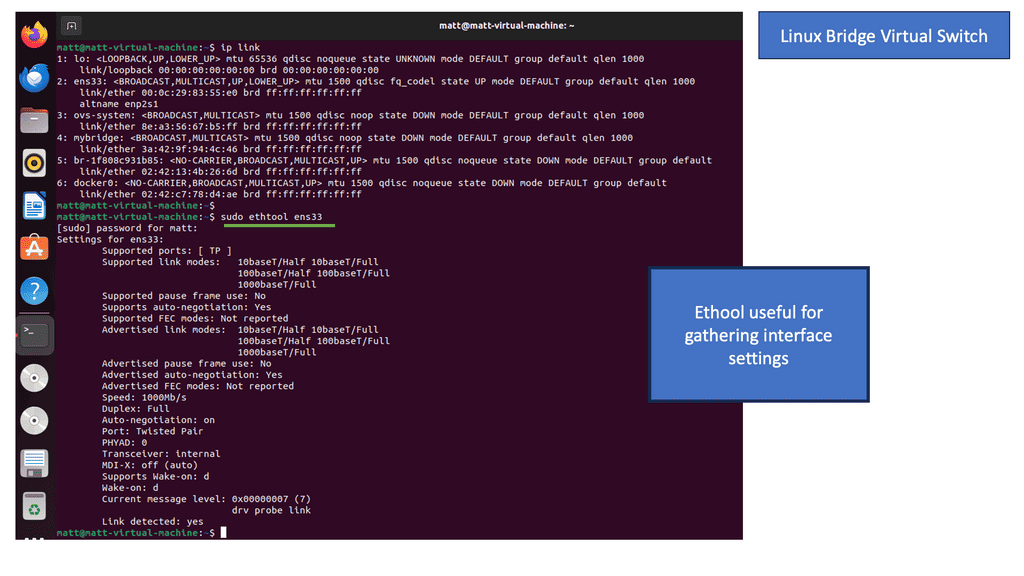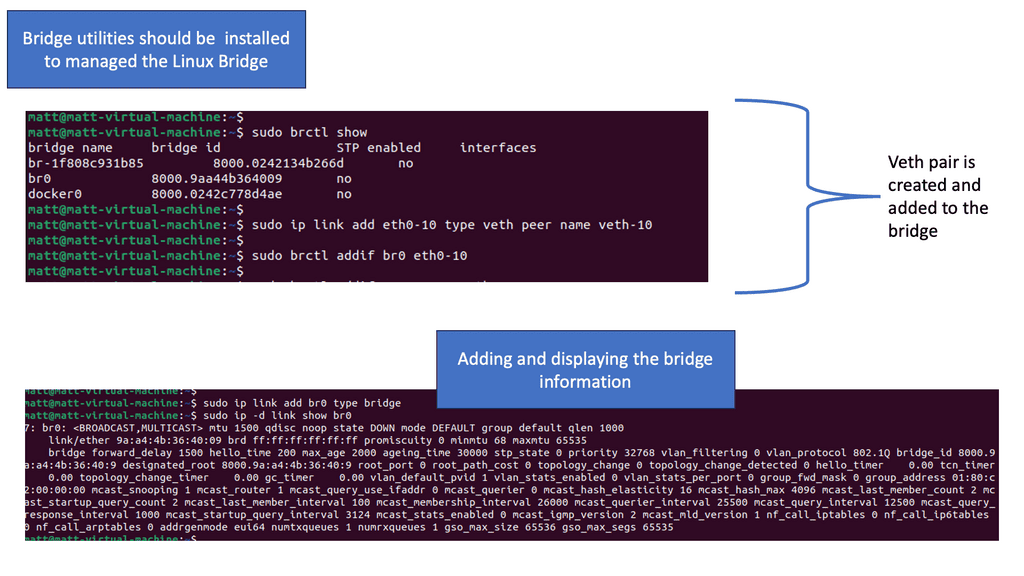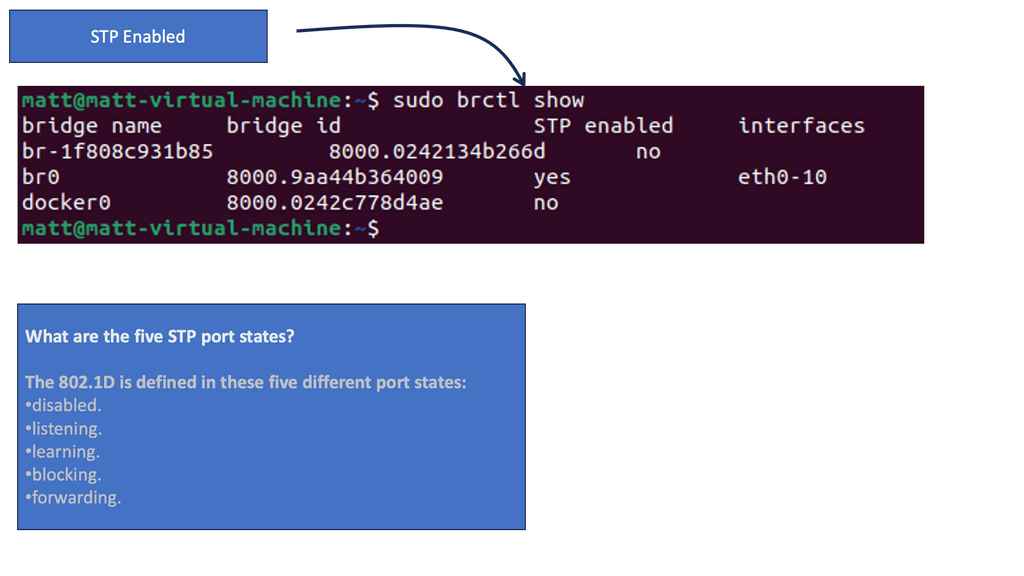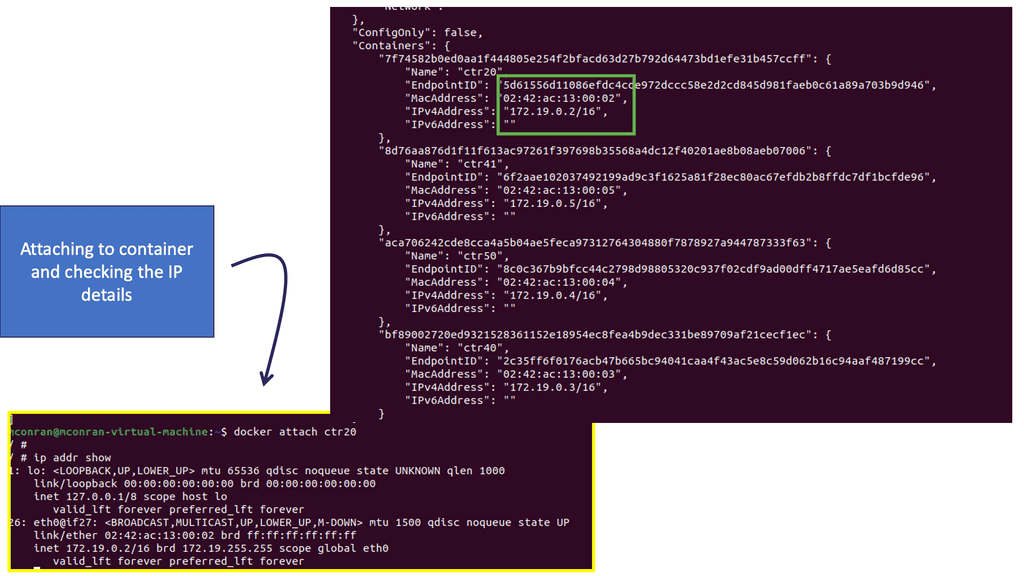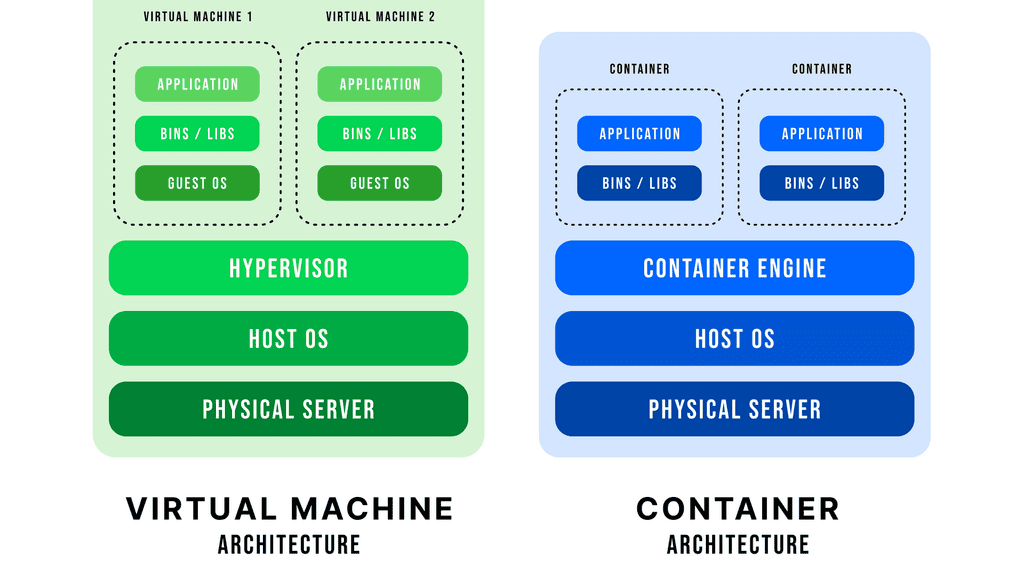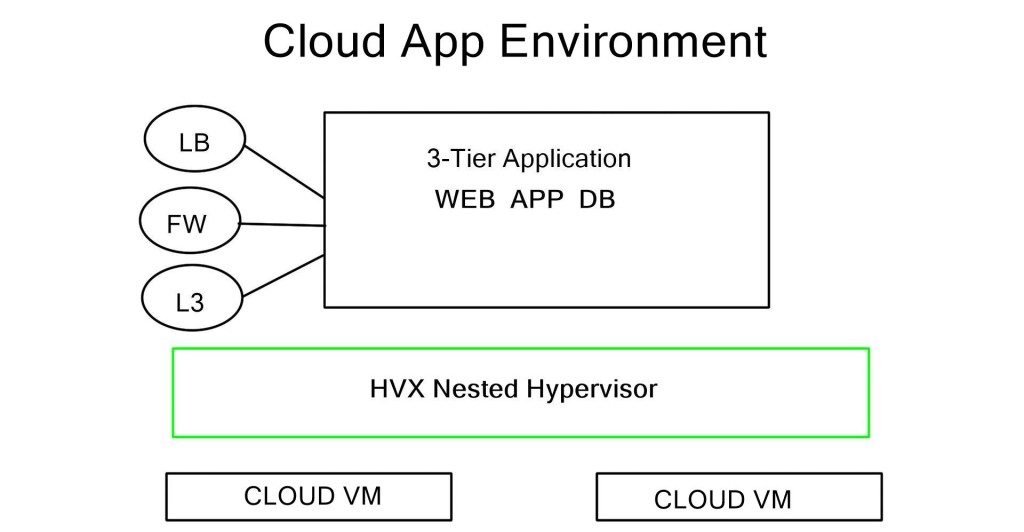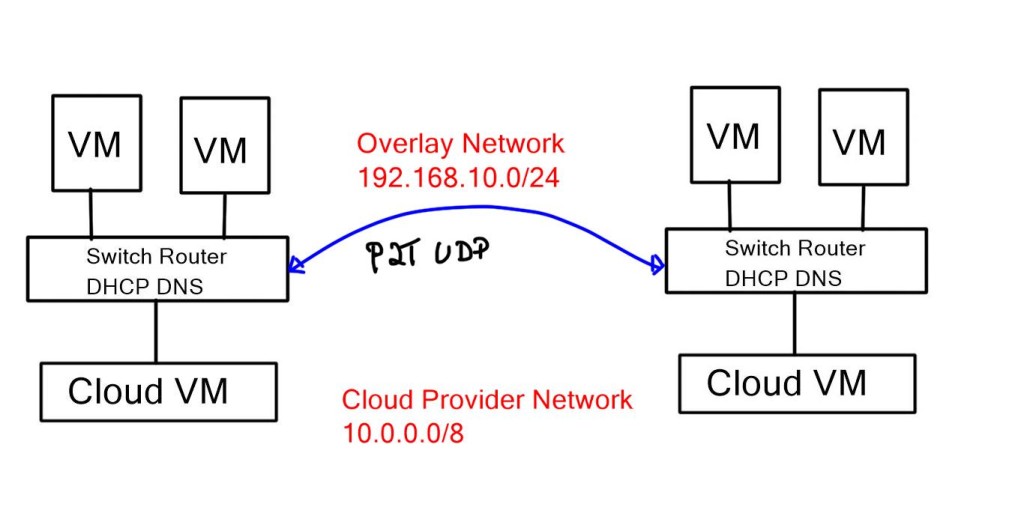Virtual Switch
In today's digital age, where connectivity is paramount, network administrators constantly seek ways to optimize network performance and streamline management processes. The virtual switch is a crucial component that plays a significant role in achieving these goals. In this blog post, we will delve into virtual switches, exploring their benefits, features, and how they contribute to creating efficient and robust network infrastructures.
A virtual switch, also known as a vSwitch, is a software-based network switch that operates within a virtualized environment. It bridges virtual machines (VMs) and physical network interfaces, enabling communication. Like a physical switch, a virtual switch facilitates data transmission, ensuring seamless connectivity throughout the network.
Virtual switches are software-based networking components that operate within virtualized environments. They play a crucial role in directing network traffic between virtual machines (VMs) and physical networks. By emulating the functionalities of traditional physical switches, virtual switches enable efficient and flexible network management in virtualized environments.
Enhanced Network Virtualization: Virtual switches provide the foundation for network virtualization, allowing organizations to create multiple virtual networks within a single physical network infrastructure. This enables better resource utilization, improved security, and simplified network management.
Simplified Network Configuration: Unlike physical switches that require manual configuration, virtual switches can be easily managed and configured through software interfaces. This flexibility allows for dynamic allocation of network resources, making it easier to adapt to changing network requirements.
Improved Network Security: Virtual switches offer advanced security features, such as virtual LAN (VLAN) segmentation and access control lists (ACLs). These features help isolate and secure network traffic, reducing the risk of unauthorized access and potential security breaches.
Scalability and Flexibility: Virtual switches provide greater scalability and flexibility compared to their physical counterparts. With virtual switches, organizations can quickly add or remove virtual ports, adapt to changing network demands, and dynamically allocate network resources as needed.
Cost Efficiency: Virtual switches eliminate the need for additional hardware, resulting in cost savings for organizations. By leveraging existing server infrastructure, virtual switches reduce both capital and operational expenses associated with physical switches.
The virtual switch has emerged as a game-changer in the world of connectivity. Its ability to enhance network virtualization, simplify network configuration, and improve security makes it a valuable tool for organizations across various industries. As our reliance on virtualized environments continues to grow, the virtual switch will undoubtedly play a pivotal role in shaping the future of connectivity.
Matt Conran
Highlights: Virtual Switch
### What is a Virtual Switch?
A virtual switch, often referred to as a vSwitch, is a software-based switch that enables the connection of virtual machines (VMs) to a network within a virtualized host environment. Unlike a physical switch, which requires hardware, a virtual switch functions entirely within the software layer, allowing seamless communication between VMs and external networks. It acts as a bridge, directing the network traffic between connected virtualized devices, thereby facilitating efficient data flow and resource utilization.
### How Virtual Switches Work
At its core, a virtual switch operates similarly to a physical switch, with the ability to forward data packets based on MAC addresses. It connects virtual network interface cards (vNICs) of VMs to each other and to the physical network. By maintaining a MAC address table, the virtual switch learns and stores the network locations of devices, ensuring that data packets are correctly forwarded to their intended destinations. This functionality allows for robust network segmentation and enhanced security measures within a virtualized environment.
### Benefits of Implementing Virtual Switches
Virtual switches offer numerous advantages that make them indispensable in modern networking. First and foremost, they provide scalability, allowing network administrators to easily add or remove VMs without the need for additional hardware. This flexibility results in significant cost savings and reduced operational complexity. Additionally, virtual switches enhance network security through features like port isolation and VLAN tagging, ensuring that sensitive data remains protected. Their ability to integrate with software-defined networking (SDN) solutions further amplifies their efficiency, enabling centralized network management and automation.
### Challenges and Considerations
While virtual switches offer compelling benefits, they also present certain challenges. Performance can be a concern, especially in environments with high levels of network traffic. Additionally, the complexity of managing virtual networks requires skilled personnel and robust monitoring tools to ensure optimal performance. Network administrators must also consider compatibility issues, as different virtualization platforms may have varying virtual switch implementations.
Understanding Virtual Switching
Virtual switching is a fundamental component of SDN, enabling the creation and management of virtual networks within a physical network infrastructure. Unlike traditional switches that rely on dedicated hardware, virtual switches operate in software, providing a flexible and programmable approach to network connectivity. By decoupling the control plane from the data plane, virtual switching allows for centralized management and dynamic allocation of network resources.
One of virtual switching’s key advantages is its ability to improve network agility. With virtual switches, network administrators can easily create, modify, and scale virtual networks to meet the changing demands of modern applications.
**Isolation Between Virtual Networks**
Virtual switching also enhances network security by providing isolation between virtual networks, preventing unauthorized access, and minimizing the impact of potential breaches. Additionally, virtual switches enable advanced network services such as load balancing, traffic shaping, and firewalling, enhancing overall network performance and efficiency.
Deploying virtual switching requires compatible network hardware and the appropriate software-defined networking infrastructure. Virtual switches are typically integrated into hypervisors or operating systems, allowing seamless integration with virtual machines and containers.
**Centralized Management**
Network administrators can configure virtual switches through a centralized management console, simplifying network provisioning and reducing operational costs. Moreover, virtual switching supports interoperability with traditional physical switches, enabling a gradual transition towards a fully virtualized network environment.
Use Cases and Applications:
Virtual switches are extensively used in various scenarios across industries. Here are a few prominent examples:
1. Data Centers: In large-scale data centers, virtual switches are critical in connecting VMs and containers to the underlying physical infrastructure. They provide agility and scalability, allowing seamless workload migration and resource allocation.
2. Network Function Virtualization (NFV): Virtual switches are vital in NFV deployments, where traditional network functions are virtualized. They enable the creation of virtual network functions (VNFs) and facilitate chaining these functions to build complex network services.
3. Software-defined networking (SDN): In SDN architectures, virtual switches are integral to the network fabric. They provide programmability and flexibility, allowing centralized network control and automated provisioning.
A virtual switch is a software-based network switch that operates within a hypervisor, facilitating network traffic between VMs and the external network. It behaves similarly to a physical switch, providing connectivity, VLAN segmentation, and traffic management capabilities.
Types: Virtual Switches
1: Standard Virtual Switches
Standard virtual switches are the most basic type, typically provided by the hypervisor. They offer essential network functions such as MAC address learning, port grouping, and basic VLAN support. Standard virtual switches are suitable for small-scale virtualization deployments with straightforward networking requirements.
2: Distributed Virtual Switches
Distributed virtual switches (DVS) take virtual networking to the next level by extending network management capabilities across multiple hypervisor hosts. DVS centralizes the configuration and monitoring of virtual switches, enabling consistent policies and simplifying network administration. It is ideal for large-scale deployments with high availability and load balancing requirements.
**Open Virtual Switches**
Open virtual switches (OVS) are an open-source alternative that provides enhanced flexibility and extensibility. OVS supports advanced features like network overlays, tunneling protocols, and fine-grained traffic control. It has gained popularity in software-defined networking (SDN) and cloud environments, allowing seamless integration with orchestration platforms and network virtualization technologies.
Virtual switches find applications across various scenarios. They are indispensable in virtualization platforms, enabling VM-to-VM communication, connectivity to physical networks, and network isolation. Virtual switches also play a vital role in SDN deployments, facilitating traffic steering, network programmability, and dynamic policy enforcement.
– Linux Bridge: OVS leverages the Linux bridge as its foundation, allowing for seamless integration with existing network infrastructures. This compatibility ensures easy adoption and migration for users already familiar with Linux networking.
– Open vSwitch: OVS extends beyond the capabilities of a traditional Linux bridge by offering advanced features like multi-layer switching, support for different tunneling protocols, and the ability to handle complex network flows efficiently.
Software-based switching
A: ) Several types of virtual switches are available on the market, including VMware vSwitch, Microsoft Hyper-V Virtual Switch, Linux bridges, and Open vSwitch (OVS). Switches like these are sometimes referred to as SDN switches. Still, they are software-based switches that reside in the kernel of the hypervisor and provide network connectivity between VMs/containers and the node itself.
B: ) Like their physical switch counterparts, they provide features like MAC learning, link aggregation, SPAN, and sFlow. These virtual switches run in software as part of a more comprehensive SDN and network virtualization solution.
C: ) Even though virtual switches aren’t a solution in and of themselves, they are essential to the development of the industry as a whole. In the data center, they have added a new edge or access layer. Feature/function development is no longer limited to physical tor switches that are hardware-defined and hardware-defined.
D:) The new edge’s software-based nature allows the rapid creation of new network functions in software, making it easier to distribute policies throughout the network, thanks to virtual switches. An example is deploying the security policy nearest to the endpoint, a VM or container, to enhance network security.
Example: OpenvSwitch
Section 1: Understanding OpenvSwitch
OpenvSwitch is an open-source, multi-layer software switch that enables network automation and virtualization. It operates at the data link layer of the networking stack and provides a flexible and programmable interface for managing virtual and physical network devices. With support for numerous protocols and technologies, OpenvSwitch offers a robust foundation for building virtualized network infrastructures.
Section 2: Features OpenvSwitch
One of OpenvSwitch’s standout features is its support for both traditional and software-defined networking (SDN) environments. It seamlessly integrates with popular SDN controllers, allowing administrators to centrally manage and control network traffic. Additionally, OpenvSwitch supports various tunneling protocols, such as VXLAN and GRE, enabling the creation of virtual networks across the physical infrastructure.
Section 3: Scenarios OpenvSwitch
OpenvSwitch is helpful in a wide range of scenarios. It plays a crucial role in creating and managing virtual networks in cloud computing environments, ensuring efficient communication between virtual machines. Moreover, OpenvSwitch is highly extensible, allowing for the integration of custom modules and extensions to meet specific networking requirements. Its ability to handle high data rates and perform packet switching at wire speed makes it an ideal choice for demanding network environments.
Virtual Network and Container Networking
Container networking operates by connecting multiple containers and enabling them to communicate with each other and the outside world. To grasp its fundamentals, it is essential to comprehend concepts like container network models, network namespaces, and container network interfaces (CNIs). We will explore these concepts in detail, shedding light on how they contribute to efficient container networking.
Container networking offers many benefits that enhance the performance and scalability of containerized applications. By leveraging container networking, developers can achieve improved service discovery, load balancing, and network security. We will discuss these advantages, showcasing how container networking can enhance application deployment and management.
Docker Default Networking
Docker default networking is the built-in networking solution that allows containers to communicate with each other and the outside world. By default, Docker creates a bridge network that acts as a virtual switch connecting all containers on the host. This bridge network assigns IP addresses to containers and provides them with a unique network identity.
One of the primary benefits of Docker default networking is the ease of container-to-container communication. Containers within the same bridge network can communicate with each other using container names as DNS entries. This convenient feature eliminates complex IP address management and enables seamless integration between related containers.
** Container to Container Networking **
While Docker default networking offers excellent flexibility, there are scenarios where direct access to the host network is required. By leveraging the host network mode, containers can share the same networking stack as the host, bypassing the Docker bridge network altogether. This mode is handy for scenarios where containers must bind to specific host ports or require low-level network access.
Docker default networking incorporates a built-in DNS resolver that simplifies service discovery within containerized environments. Containers can resolve each other’s names using the embedded DNS server, making it easier to establish connections without remembering IP addresses. This feature becomes crucial in dynamic container orchestration scenarios where containers come and go frequently.
The Role of Virtual Switching
Virtual Switching functionality is not carried out with a standard switch, and we will have a distributed virtual switch located closer to the workloads that will connect to a ToR switch. The ToR switch is the first hop device from the virtual switch. In a VMware virtualized environment, a single host runs multiple virtual machines (VM) through the VMkernel hypervisor.
The physical host does not have enough network cards to allocate a physical NIC to every VM, and there are exceptions, such as Cisco VM-FEX. Still, we generally have more virtual machines than physical network cards. We need a network to support communication flows so that VMs can communicate with each other internally or even via uplink.
**Traffic Boundaries**
Implementing a Layer 2 switch within the ESXi hosts allows traffic flowing from VMs within the same VLAN to be locally switched. Traffic across VLAN boundaries is passed to a security or routing device northbound to the switch.
There are possibilities for micro-segmentation, VM NIC firewalls, and stateful inspection firewalls, but let’s deal with them later in an article. Essentially, the virtual switch aggregates multiple VM traffic across a set of links and provides frame delivery between VMs based on Media Access Control (MAC) address, all of which fall under the umbrella of virtual switching with a distributed virtual switch.
Example Traffic Boundary:
Understanding Zone-Based Firewalls
– Zone-based firewalls provide a robust means of controlling network traffic by dividing the network into security zones. Each zone represents a group of network devices with similar security requirements. By creating logical zones and enhancing network protection, administrators can apply different security policies and access rules tailored to specific zones.
– Zone-based firewalls offer several advantages over traditional firewall architectures. Firstly, they provide granular control over network traffic by allowing administrators to define policies based on source and destination zones. This helps prevent unauthorized access and restricts lateral movement within the network. Secondly, zone-based firewalls simplify firewall management by reducing the number of access control lists (ACLs) required, resulting in improved performance and more straightforward configuration.
Enter the Hypervisor
Servers use hypervisors to divide specialized hardware resources from the operating system. With a hypervisor, server drivers and resources are connected through the hypervisor, not the OS.
Adding a layer may increase efficiency, so what can they do to make it more efficient? I think that’s a good question.
In short, a hypervisor provides a virtual connection to a server’s resources for a virtual machine’s operating system. The significant part is that it can do this for many VMs running on the same server, regardless of whether they use different operating systems or applications.
**Virtual Machine Consolidation**
Virtual machines and hypervisors allow us to consolidate servers at a huge scale. The majority of servers can only run at a capacity of 5% to 10%. A company may save 6x to 15x in physical server costs if multiple applications are combined onto one server and CPU usage is less than 80%. In addition, there are other efficiencies. Cooling and power costs can be dramatically reduced with a 10x reduction in server numbers.
Another significant benefit of virtualization is the ability to migrate servers within a data center in a few hours without disrupting service. If a data center were moved without virtualization, it would almost certainly cause widespread service disruption over weeks or months. Furthermore, virtualization improves disaster recovery capabilities and reduces provisioning times for new applications.
Virtualizing the network
VMs supporting applications or services need physical switching and routing to communicate with data center clients over a WAN link or the Internet. Data centers also require security and load balancing. Virtual switches (hypervisors) are the first switches traffic leaves a VM, followed by physical switches (TORs or EORs). When traffic leaves the hypervisor, it enters the physical network, which cannot handle the rapid changes in the state of the VMs connected to it.
We can solve this problem using a logical network of virtual machines. As with most network virtualization, VXLAN does this through encapsulation. Unlike VLANs, which can only create 4096 logical networks on any given physical network, VXLAN can create around 16 million logical networks. This scale makes it essential to have a large data center or cloud.
Network Virtualization
Software-defined networking has become synonymous with network virtualization. This section uses network virtualization to refer to a software-only overlay solution. Some solutions in this category include VMware NSX, Nokia Nuage Networks Virtualized Services Platform (VSP), and Juniper’s Contrail.
VXLAN is an overlay protocol used to connect hypervisor-based virtual switches. Adjacencies are established between VMs residing on different physical hosts, independent of the physical network, which may be Layer 2, Layer 3, or a combination of both. The physical network is decoupled into a virtual one, allowing flexibility and choice.
Virtual switches are just one aspect of overlays, part of network virtualization solutions. These solutions can offer security, load balancing, and backward integration into the physical network with a single management point (the controller). Often, network virtualization solutions integrate with best-of-breed Layer 4-7 service providers, allowing users to choose the technology they want to use.
A centralized control plane maps overlay and underlay networks. Despite its scalability, flexibility, and interoperability, this centralized approach has limitations. Alternative protocols exist, such as Ethernet VPN (EVPN). Through BGP, each network device distributes mapping information to the rest of the network to establish VXLAN tunnels in EVPN. Controllerless solutions are VXLAN solutions without controllers.
Use Case: VXLAN – Flood and Learn
Understanding VXLAN
VXLAN, which stands for Virtual Extensible LAN, is a network virtualization technology that allows for the creation of scalable and flexible overlay networks. It enables the encapsulation of Layer 2 Ethernet frames within Layer 3 UDP packets, making extending Layer 2 connectivity across different Layer 3 networks possible. Before diving into flood and learning, let’s briefly grasp the basics of VXLAN.
Flood and learn is a mechanism VXLAN uses to ensure that multicast, broadcast and unknown unicast traffic is handled correctly within the overlay network. When a VXLAN tunnel endpoint (VTEP) receives such traffic, it floods the packets to all other VTEPs within the same VXLAN segment. Each VTEP then learns the necessary forwarding information by examining the inner Ethernet frame. This process allows for efficient and dynamic traffic forwarding across the VXLAN network.
Related: You may find the following helpful post for pre-information:
Virtual Switch
VMware Virtual Switch
The virtual network delivers networking for virtual machines, such as ESXi hosts in the VMware world. Like physical switches in our physical network, the essential component in a virtual network is a virtual switch. A virtual switch is a software-based switch built inside the ESXi kernel (VMkernel), used to deliver networking for the virtual environment.
For example, traffic that flows from/to virtual machines is passed through one of the virtual switches in VMkernel. The virtual switch provides the connection for virtual machines to communicate with each other, whether operating on the same host or different hosts. A virtual switch works at Layer 2 of the OSI model.
Features of Virtual Switches:
1. VLAN Support: Virtual switches support VLANs, allowing administrators to logically divide a physical network into multiple virtual networks. This enables better network segmentation, improved security, and more efficient use of network resources.
2. Quality of Service (QoS): Virtual switches provide QoS capabilities, allowing administrators to prioritize specific types of network traffic. They ensure optimal performance and minimal latency by assigning higher priority to critical applications such as VoIP (Voice over Internet Protocol) or video conferencing.
3. Traffic Monitoring and Analysis: Virtual switches offer built-in traffic monitoring and analysis tools. Administrators can monitor network traffic in real-time, identify bottlenecks, and gain valuable insights into network performance. This enables proactive troubleshooting and optimization of network resources.
Open vSwitch in Linux
This guide addresses virtual switching with the Open vSwitch (OVS). The OVS is a multi-layer virtual switch that can perform basic Layer 3 and Layer 3 functionality. I have OVS running on a Ubuntu host. Let’s first have a look at the setup and network configuration. I’m in a virtualized environment, and we have an online interface ens33 to the outside world. You can also see that we have OVS already installed with a bridge called my bridge setup.
Note:
The OVS acts like a standard switch and carries out the same switching logic you would find with, for example, a physical catalyst switch. LAN switches receive Ethernet frames and then make a switching decision: either forward the frame to some other ports or ignore the frame. To accomplish this primary mission, switches perform three actions:
- Based on the destination MAC address, decide whether to forward a frame or filter (not forward) it.
- Preparing to forward frames by learning MAC addresses by examining the source MAC address of each frame received by the switch
- Preparing to forward only one copy of the frame to the destination by creating a (Layer 2) loop-free environment with other switches by using Spanning Tree Protocol (STP)
Linux works with namespaces, which form the underlying technology of containers. See how we added a new namespace called finance. We will also create a new veth pair. A veth pair is like a virtual cable. What goes in one end must come out the other end. Consider a veth pair linked to a standard physical cable but in virtual work.
Remember, when we discuss a new namespace, we need to move the links around of the veth pair to the corresponding namespace. In this setup, we have configured only one namespace, finance, but we also have the default namespace of root. The OVS switch, by default, is in the root namespace and can be used to connect disparate namespaces. The OVS also uses VXLAN to extend Layer 2 over IP.
Virtual Switch: Three Distinct Types
To enable virtual switching, there are three virtual switches in a VMware environment: a) a standalone virtual switch, b) distributed virtual switch, and c) 3rd party distributed switch, such as the Cisco Nexus 1000v. These virtual switches have ports, and the hypervisor presents what looks like an NIC to every VM. The VMs are now isolated, thinking they have a virtual Ethernet adapter. Even if you change the physical cards in the server, the VM does not care as it does not see the physical hardware.
The diagram displays a virtualized environment with two sets of VMs, blue and red, attached to corresponding Port Groups. Port Groups are nothing special, simply management groups based on configuration templates. You may freely have different VMs in Port Groups in the same VLAN communication. The virtual NIC is a software construct emulated by the hypervisor.
Virtual switching and the virtual switch:
The standalone virtual switch lacks advanced features but gains in performance. It is not a feature-rich virtual switch and supports standard VLAN and control planes consisting of CDP. Each ESXi host has an independent switch comprised of its data and control planes. Every switch is a separate management entity.
The Distributed virtual switch (vDS) is purely a management entity and minimizes the configuration burden of the standalone switch. It’s a template you configure in vCenter, applied to individual hosts. It lets you view the entire network infrastructure as one object in the vCenter. The port and network statistics assigned to the VM move when the VM moves.
Virtual distributed switch:
The vDS is a simple management template. Each ESXi host has its control and data plane with unique MAC and forwarding rules. The local host proxy switch performs packet forwarding and runs control plane protocols. One major vDS drawback is that if vCenter drops, you cannot change anything on the local hosts.
As a best design practice, most engineers use the standard standalone switch for management traffic and vDS for VM traffic on the same host. Each virtual switch (vS and vDS) must have its uplinks. For redundancy, you need at least two uplinks for each switch; already, you need four uplinks, usually operating at 10Gbps.
- VMware-based software switches don’t follow 802.1 forwardings or operate Spanning Tree Protocol (STP). Instead, they use special tricks to prevent forwarding loops, such as Reverse Path Forwarding (RPF) checking on the source MAC address.
Virtual Switch and the Linux Bridge
The Linux Bridge is a virtual device connecting multiple network interfaces, allowing them to operate as a single network segment. Similar to the Open vSwitch, the Linux bridge uses veth pairs.
Note:
– The Linux Bridge supports STP, which prevents network loops and ensures efficient packet forwarding.
– The Linux Bridge can handle Virtual LANs (VLANs) and allows for creating VLAN-aware bridges.
– Configuring VLANs with the Linux Bridge enables network segmentation and improved traffic management.
Linux Bridge Utilities:
Linux Bridge Utilities, or brctl, can create and manage software-based network bridges in Linux. These utilities connect multiple network interfaces at the data link layer, creating a virtual bridge that facilitates communication between network segments.
Virtual Switches, like physical switches, run STP to prevent loops.
The Cisco Nexus 1000v
Third-party virtual switching may also be plugged in, and the Nexus 1000v is the most popular. It operates with a control plane, a Virtual Supervisor Module (VSM), distributed data plane objects, and a Virtual Ethernet Module (VEM). Cisco initially operated all control plane protocols on the VSM, including LACP and IGMP snooping. It severely inhibited scalability; now, control plane protocols are distributed locally to the VEMs.
It’s a feature-rich software switch and supports VXLAN. You may also use the TCP-established keyword unavailable in VMware versions. Some of these products are free; others require an enterprise plus license. If you want a free, feature-rich, standards-based switching product, use Open vSwitch, licensed under Apache 2.0.
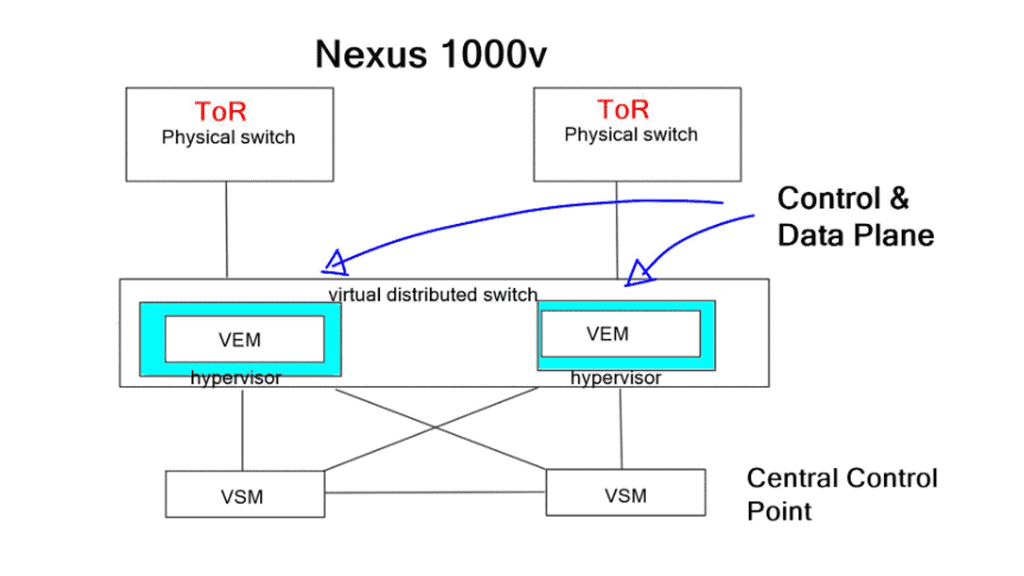
Open vSwitch
What is OVS? Open vSwitch is similar to VMware virtual switch and Cisco Nexus 1000v. It operates as a soft switch within the hypervisor or as the control stack for switching silicon. For example, you can flash your device with OpenWrt and install the Open vSwitch package from the OpenWrt repository. Both are standards-based.
The following displays the ports on an Open vSwitch; as you can see, several bridges are present. These bridges are used to forward packets between hosts. It has a great feature set for a complimentary switch, including VXLAN, STT, Layer 4 hashing, OpenFlow, etc.
**Virtual Switching: Integration with the ToR Switch**
The virtual switch needs to connect to a ToR switch. So, even though the connection is logical, there must be a physical connection between the virtual switch and the ToR switch. Preferably a redundant connection for high availability. However, what happens with the VM on the virtual switch that needs to move?
Challenges occur when VMs must move, resulting in an enormous VLAN sprawl. All VLANs configured on all uplinks to the ToR switch create one big switch. What can be done to reduce this requirement? The best case would be integrating a solution synchronizing the virtual and physical worlds. Any changes in the virtual world are automatically provisioned in the physical world.
Ideally, we would like the list of VLANs configured on the server-facing port adjusted dynamically as VMs are moved around the network. For example, if VM-A moves from location A, we want its VLAN removed from the previous location and added to the new location B. Automatic VLAN synchronization reduces the flooding of Broadcast to servers, lowering the CPU utilization on each physical node.
Virtual switch: The different vendors
Arista, Force 10, and Brocade have VMware networking solutions on their ToR switches. Arista’s solution is VMtracer, which is natively integrated with EOS and works across all their data center switches. VMtracer gives you better visibility and control over VMs. It sends and receives CCDP or LLDP packets to extract VM information, including VLAN numbering per server port.
When a VM moves, it can remove the old VLAN and add the new VLAN to the new ports. Juniper and NEC use their Network Management systems to keep track of VMs and update the list of VLANs accordingly.
Cisco utilizes VM-FEX and a new feature called VM tracker, which is available on NX-OS. Cisco’s VM tracker interacts with vCenter SOAP API. It works with vCenter to identify the VLAN requirements of each VM and track their movements from one ESXi host to another. It relies on Cisco Discovery Protocol (CDP) information and does not support Link Layer Discovery Protocol (LLDP).
Edge Virtual Bridging (EVB)
An IEEE standard way to solve this is called EVB, and Juniper supports it, as HP ToR switches. VMware virtual switches do not currently support it. To implement EVB in a VMware virtualized environment, you must change the VMware virtual switch to either HP or Juniper. EVB uses VLANs or Q-in-Q tagging between the hypervisor and the physical switch. They introduced a new protocol called VSI that uses VDP as its discovery protocol.
The protocol runs between the virtual switch in the hypervisor and the adjacent physical switch, enabling the hypervisor to request information (for example, upon VM move) from the physical switch. EVB follows two paths a) 802.1qbg and b) 802.1qbh. 802.1qbg is also called VEPA (Virtual Ethernet Port Aggregation), and 802.1qbh is also known as VN-Tag (Cisco products support VN-Tag). Both are running in parallel and attempt to provide consistent control for VMs.
Limit core flooding
To reduce flooding in the network core, you need a protocol between the switches that allows them to exchange information about which VLANs are in use. Cisco uses VTP and designs it carefully. There is a standard layer 2 messaging protocol called Multiple VLAN Registration Protocol (MVRP), but many vendors do not implement it.
It automates the creation and deactivation of VLANs by allowing switches to register and de-register VLAN identifiers. Unlike VTP, it does not use a “client” – “server” model. Instead, MVRP advertises VLAN information over 802.1q trunks to connected switches with MVRP enabled on the same interface. The neighboring switch receives the MVRP information and builds a dynamic VLAN table. MVRP is supported on Juniper Networks MX Series routers and EX Series switches.
Virtual switches have become indispensable components in modern network infrastructures. Their ability to enhance network performance, simplify management processes, and provide advanced security features make them essential for organizations of all sizes. By leveraging the benefits and features of virtual switches, network administrators can create robust and efficient networks, enabling seamless connectivity and optimizing overall network performance.
Closing Points on Virtual Switching
Virtual switching involves the emulation of a network switch within a software environment, allowing multiple virtual machines (VMs) to connect and communicate as if they were on a physical network. Unlike traditional hardware switches, virtual switches operate within the hypervisor layer, providing a bridge for data packets between VMs and the external network. This virtualization not only reduces the need for physical hardware but also streamlines the management of network resources.
One of the foremost advantages of virtual switching is its unparalleled scalability. Organizations can easily add or remove VMs without the constraints of physical infrastructure, adapting swiftly to changing demands. Moreover, virtual switches enhance network security by isolating traffic between VMs, reducing the risk of unauthorized access. The centralized management offered by virtual switching simplifies network configuration, monitoring, and troubleshooting, making it an indispensable tool for IT administrators.
As cloud computing becomes the norm, virtual switching plays a critical role in supporting cloud infrastructure. It enables the dynamic allocation of resources, ensuring optimal performance and reliability for cloud-based applications. By facilitating smooth data transfer between cloud instances, virtual switching enhances the agility and efficiency of cloud services, catering to the needs of businesses and users alike.
Despite its numerous benefits, virtual switching is not without challenges. Organizations must contend with issues related to network latency, packet loss, and compatibility with existing hardware and software. Additionally, the complexity of managing virtual networks requires skilled IT professionals to ensure optimal performance and security. Careful planning and implementation are essential to harness the full potential of virtual switching.
Summary: Virtual Switch
In today’s digital age, virtual switching has emerged as a transformative technology, revolutionizing how we connect and communicate. From data centers to networking infrastructure, virtual switching has paved the way for unprecedented flexibility and efficiency. This blog post delved into virtual switching, exploring its benefits, working principles, and potential applications.
Understanding Virtual Switching
Virtual switching is the process of emulating network switches using software. Unlike traditional physical switches, virtual switches exist purely in the virtual realm, allowing for dynamic configuration and management. By abstracting the hardware layer, virtual switching enables greater scalability, agility, and cost-effectiveness.
How Virtual Switching Works
Virtual switches operate within hypervisors or virtualization platforms, intermediaries between virtual machines (VMs) and the physical network infrastructure. They leverage software-defined networking (SDN) principles to facilitate network traffic flow, applying policies and routing packets between VMs or external networks. Through advanced algorithms and protocols, virtual switches ensure efficient data transmission and network security.
Benefits and Applications of Virtual Switching
Enhanced Flexibility: Virtual switching liberates organizations from the constraints of physical hardware. It allows for seamless migration of VMs across hosts, enabling load balancing, resource optimization, and high availability. This flexibility empowers businesses to adapt and scale their networks with ease.
Improved Efficiency: The dynamic nature of virtual switches streamlines network management and reduces operational complexity. Administrators can configure and provision virtual networks on demand, eliminating the need for manual hardware reconfiguration and resulting in significant time and cost savings.
Network Virtualization: Virtual switching forms the foundation of network virtualization, enabling the creation of virtual networks, overlays, and logical partitions. By abstracting the network layer, organizations can achieve multi-tenancy, isolate traffic, and enhance security. This technology has found applications in cloud computing, software-defined data centers, and network function virtualization.
Challenges and Considerations
While virtual switching offers numerous advantages, there are also some drawbacks. Factors such as network latency, scalability, and compatibility with existing infrastructure must be carefully evaluated. Additionally, security measures, such as implementing virtual firewalls and access controls, become crucial in protecting virtual networks from potential threats.
Conclusion
In conclusion, virtual switching has ushered in a new era of connectivity, transforming the networking landscape. Its ability to provide flexibility, efficiency, and network virtualization has made it a vital component of modern IT infrastructure. As technology continues to evolve, virtual switching will play a pivotal role in shaping the future of networking.

